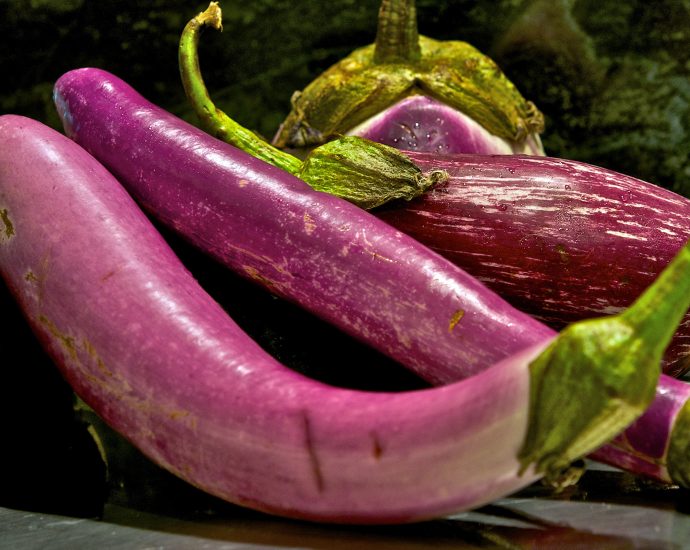Take off some strips of peel (or not) and slice the eggplant about ½ to ¾ inch thick; on the bias will give you more flesh, less skin, per bite. I do not pre-salt eggplant. Heat enough oil to generously cover (by about ¼ inch) the bottom of a large sauté pan. I use either olive or neutral flavored oil depending on the flavors in the rest of the meal I am preparing. Because you do not want to stack the slices but want to cook them in a single layer, use the largest pan you have. You still may need to work in batches.
Sauté the eggplant slices until golden brown on both sides. This part takes patience; you cannot rush it. You will need to drizzle in a little more oil when you flip the slices over to cook on the other side. I end up using around ½ to ¾ cup of oil for a pound of eggplant. The fresher the eggplant, the denser the flesh and the less oil you need, but don’t skimp on the oil or the taste and texture just won’t be right.
When both sides are golden brown, sprinkle in a little salt, pour in some water (enough to come half way up the slices) and cover the pan. Cook on high until the eggplant steams in the water and is again sizzling in the pan, maybe three to five minutes. You want the eggplant slices to be plump, with an almost soufflé texture, but still retain their shape. If you are going to finish the eggplant by baking it with a sauce in the oven, the browned slices should still feel a bit firm.
The day you buy the eggplant, you can cook it to this point and store in the refrigerator for a couple of days until further inspiration strikes. This is my starting point, whether I will finish the dish by baking it in the oven with an onion, garlic and tomato sauce for a Mediterranean version or with sautéed scallion, ginger, garlic and soy for an Asian preparation. I also use this style eggplant as a star element in a vegetable curry, folded in towards the end and simmered in the sauce just long enough to meld the flavors.

